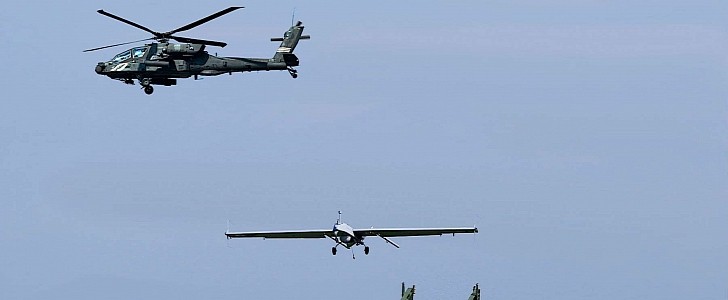The relatively new world of military drones is a very diverse one, and it seems to have a tendency to become increasingly so on account of the military's ever-changing requirements.
The Shadow is one of the many such technologies serving the needs of the armed forces. Introduced in the early 2000s, it has already amassed about 1.25 million hours of flight time in the service of both the U.S. Army and its partner nations, like Australia, Sweden, or Turkey.
There are several variants of the drone, the most recent of all being the RQ-7B in Block II configuration. This one comes with a flight time of 8 hours, a range of 125 miles (201 km, line of sight), and a maximum altitude of 18,000 feet (5,486 meters).
But, as said, its operators' needs are always changing, and the U.S. Army just announced it would pay $607 million to Textron Systems Corporation to get the drone upgraded to Block III, among other things.
The improvements target design changes that should make the Shadow capable of operating in bad weather, increased power (undisclosed), but also operational enhancements, like fitting the machines with the latest high-definition day-and-night video payload and reducing their acoustic signature.
“We are excited to continue our partnership with the U.S. Army and to bring new capabilities to the Shadow TUAS fleet,” said in a statement Senior Vice President Wayne Prender of Textron Systems.
“We are extremely proud of our people, who work every day alongside our customer to develop, produce, field and sustain this great capability for the Warfighter.”
The contract also covers logistics support, field services, and engineering support. Work on getting the drones to Block III will begin immediately, said the company, while the contract should be in effect for the next five years. Operations will be conducted at the Textron Systems’ Hunt Valley facility in Maryland.
There are several variants of the drone, the most recent of all being the RQ-7B in Block II configuration. This one comes with a flight time of 8 hours, a range of 125 miles (201 km, line of sight), and a maximum altitude of 18,000 feet (5,486 meters).
But, as said, its operators' needs are always changing, and the U.S. Army just announced it would pay $607 million to Textron Systems Corporation to get the drone upgraded to Block III, among other things.
The improvements target design changes that should make the Shadow capable of operating in bad weather, increased power (undisclosed), but also operational enhancements, like fitting the machines with the latest high-definition day-and-night video payload and reducing their acoustic signature.
“We are excited to continue our partnership with the U.S. Army and to bring new capabilities to the Shadow TUAS fleet,” said in a statement Senior Vice President Wayne Prender of Textron Systems.
“We are extremely proud of our people, who work every day alongside our customer to develop, produce, field and sustain this great capability for the Warfighter.”
The contract also covers logistics support, field services, and engineering support. Work on getting the drones to Block III will begin immediately, said the company, while the contract should be in effect for the next five years. Operations will be conducted at the Textron Systems’ Hunt Valley facility in Maryland.







